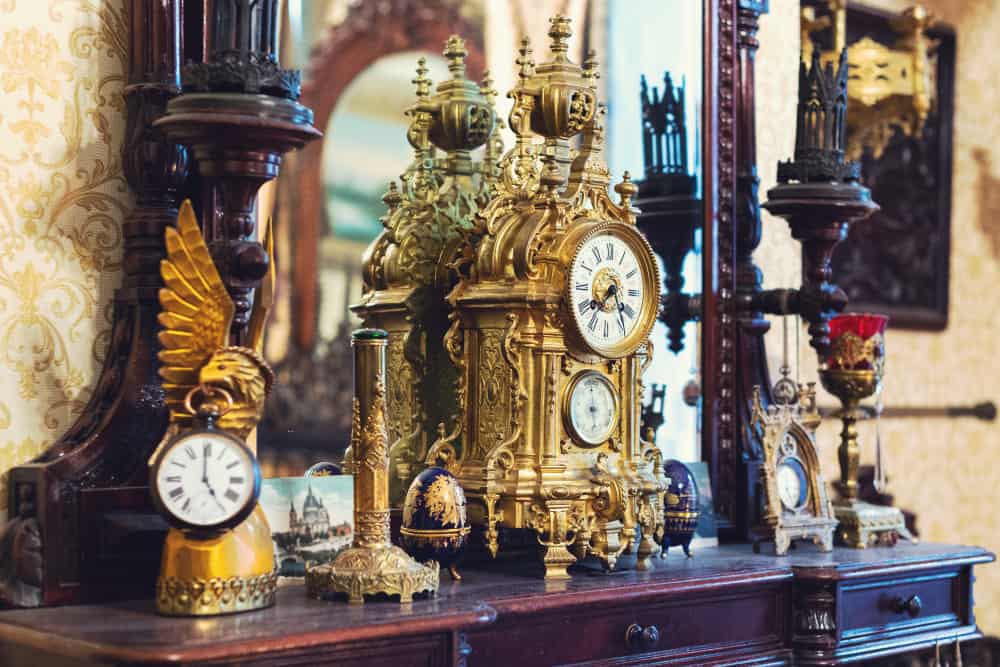Antique clocks are timeless art pieces you can have in your home or office and become a strong representation of your style. However, vintage clocks are not only decoration items for your spaces. These are valuable pieces that are considerably pricey in the market.
Whether you’re a clock collector or interested in interior design, getting the right timepiece is crucial. That’s why we’re here to show you everything you need to know about vintage clocks.
Table of Contents
How Can You Tell If A Clock Is Antique?
Clock collectors are moved by different factors such as some pieces’ beautiful artwork, the clocks’ inner working, a particular craftsman, or a rare clock case. Regardless of your focus as a clock collector, you must know how to identify a genuine vintage clock. There are multiple ways to tell if a clock is authentically antique. Below, we’ll show you some of them:
By The Name of the Manufacturer
Some collectors are only interested in gathering clocks from a particular manufacturer. In that case, you should identify the name of the brand in the clock and where it’s located. Beware of the position of the manufacturer’s name on the clock. This is usually where some reproducers fail in replicating the clock.
You can use this information to tell if the clock you’re interested in is actually authentic. Real timepieces will have their manufacturer’s name on the following positions:
- Impressed or engraved on the center front of the dial or near it.
- Carved or printed near the edge of the dial’s front. Some can be covered by a bezel.
- Stamped or inscribed on the movement’s backplate
- Some clocks may have a paper label pasted on their backs or inside the clock case.
Keep in mind that some clocks have the name of their retailers instead of their manufacturers. If this is the case, you can look into the retailer’s information to find out the date of the clock and the manufacturer.
Some timepieces are also unmarked. This can happen if the clock was imported from overseas. You should know that back in the time, foreign clocks were not marked, but they had a trademark symbol instead. This could give you an idea of where it came from and the date it was fabricated.
By The Types and The Serial Number
Other crucial factors can help you identify whether a clock is antique or not. Apart from the manufacturer’s name, you can also evaluate the type of clock you’re looking at.
Some clock styles are more related to certain eras than others, and you can tell that by the type of glass, the dial material, stencillings, and the striking clock movement. Other factors to consider would be the type of fasteners and the serial number.
By Materials
If you’re not an expert in wooded materials, clock’s inner function, or history, the following tips could help identify antique clocks. You should consider that some materials were not invented until a certain period, and just like fashion, clocks had their own trending styles. These hints will clarify your research.
- Before 1820, American-made clocks had wooden movements.
- In 1880, the clockmaker Seth Thomas used Adamantine veneer, which is often called cellulite, to simulate marble in the clocks’ designs.
- Since 1896, every imported clock to the USA had to be marked with its country of origin.
- No clock before the early 19th century used Plywood. Companies started using it in 1905.
Clock Collection Resources
More experienced clock collectors have developed in-depth guides to help amateurs find authentic vintage clocks. Some of the most popular ones are Savage and Polite’s Antique Clocks Identification and Price Guide and the National Association of Watch and Clock Collectors.
These resources contain detailed antique clock identification guides, pictures, large databases of clock manufacturers and types, and prices. These materials also have multiple articles on trademark identification, silver marks, and British hallmarks. Most of these databases include the date and clockmakers’ names.
Famous Antique Clock Manufacturers
There are multiple antique clock manufacturers to look for, but it’ll depend on your focus as a clock collector. Some antique collectors are driven by artwork beauty, others by functionality or a particular era.
Each of the following clock manufacturers has a representative style and generation. Below, we’ll give you a brief description of three of the most popular antique clock manufacturers.
- Waltham Clock Company – This famous clock manufacturer operated in the United States from 1850 to 1957. It was known for its antique wall clock products, shelf clocks, and half clocks.
- Simon Willard – Simon Willard was a renowned clock maker that lived in the 18th and 19th centuries. He produced numerous clocks and was known for his flagship product, the gallery clock. This is a banjo-shaped clock that is very popular at the moment.
- E. Howard & Co. – This company was formed by Edward Howard and Charles Rice in the 19th century. It was known for its alarm clock products.
Types Of Antique Clocks
There are multiple types of antique clocks, depending on their functions and styles. Below is a list of the most common types of antique clocks you’ll find for your collection:
Cuckoo clocks
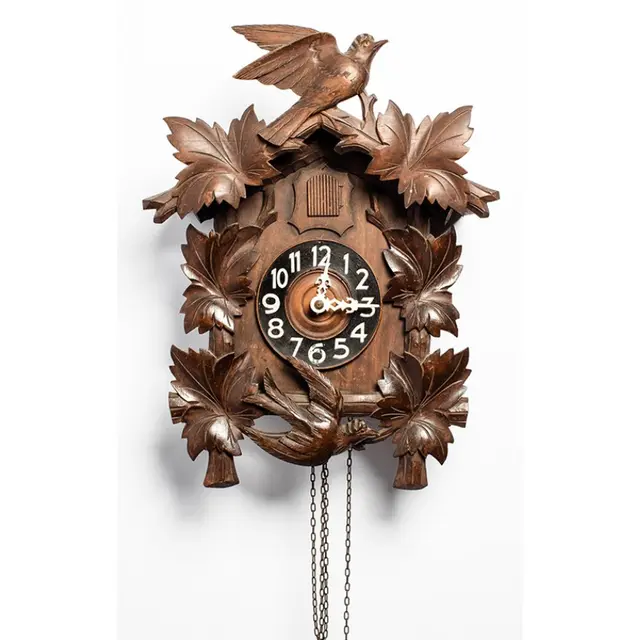
This type of clock works with a pendulum structure. It announces each hour with a cuckoo call from a bird. The cuckoo bird will automatically move out of the clock every hour and emit that sound.
Grandfather clocks
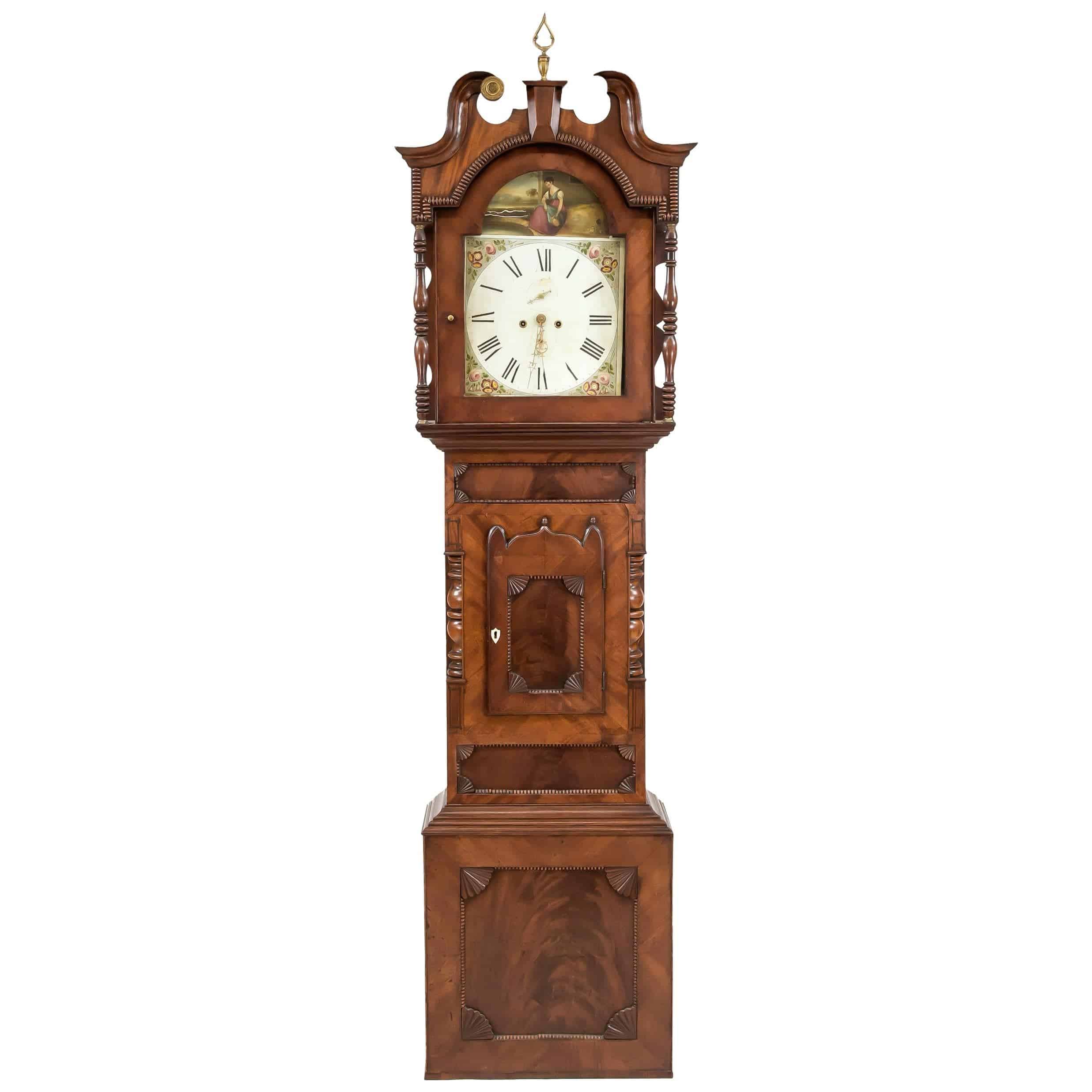
These are rectangular tall case clocks with an encapsulated pendulum, also called long case clocks. They are usually suspended by chains.
Antique mantel clock
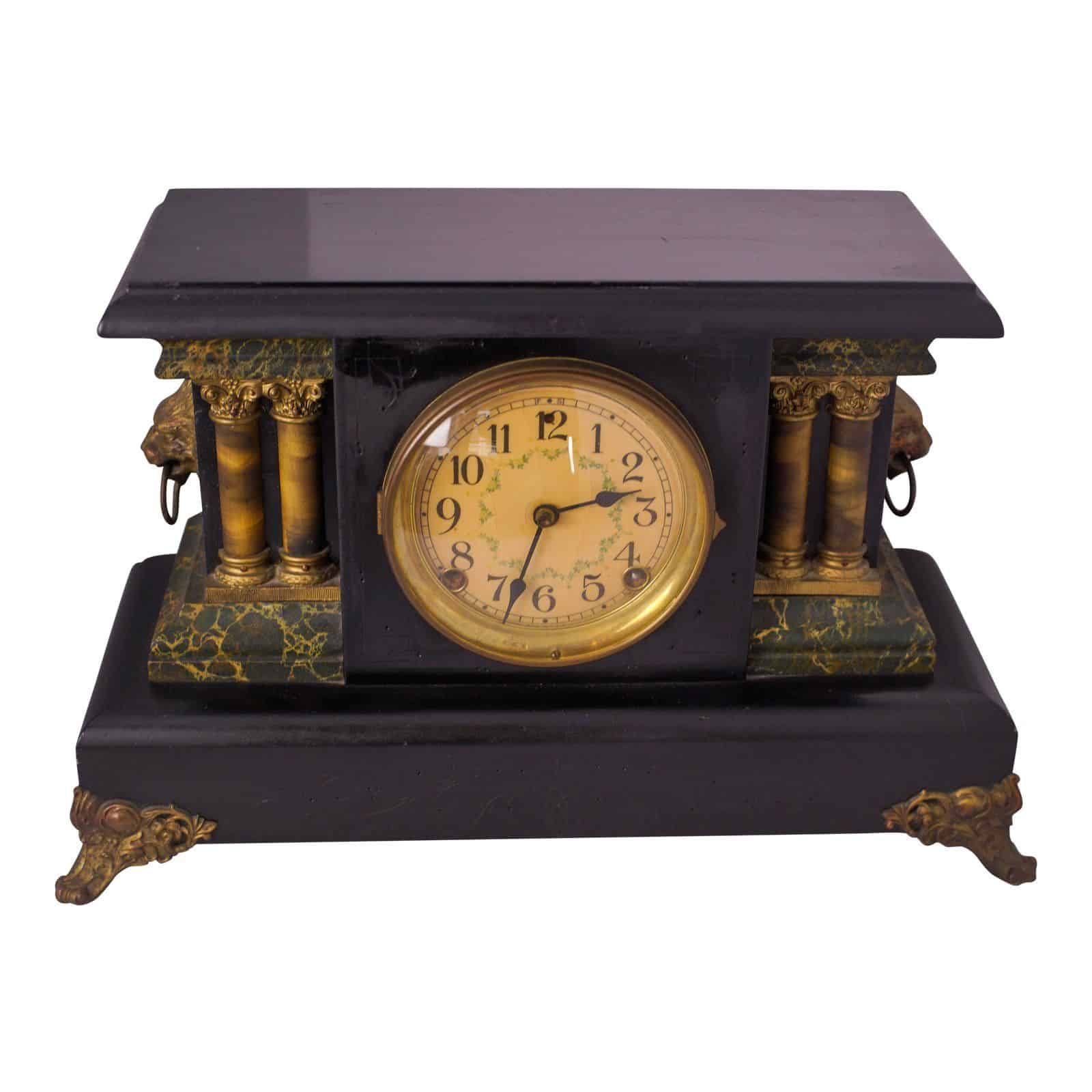
Mantel clocks are engraved decorative clocks used on top of shelves and mantels. They were first produced in the 18th century in France.
Porcelain or ormolu clocks
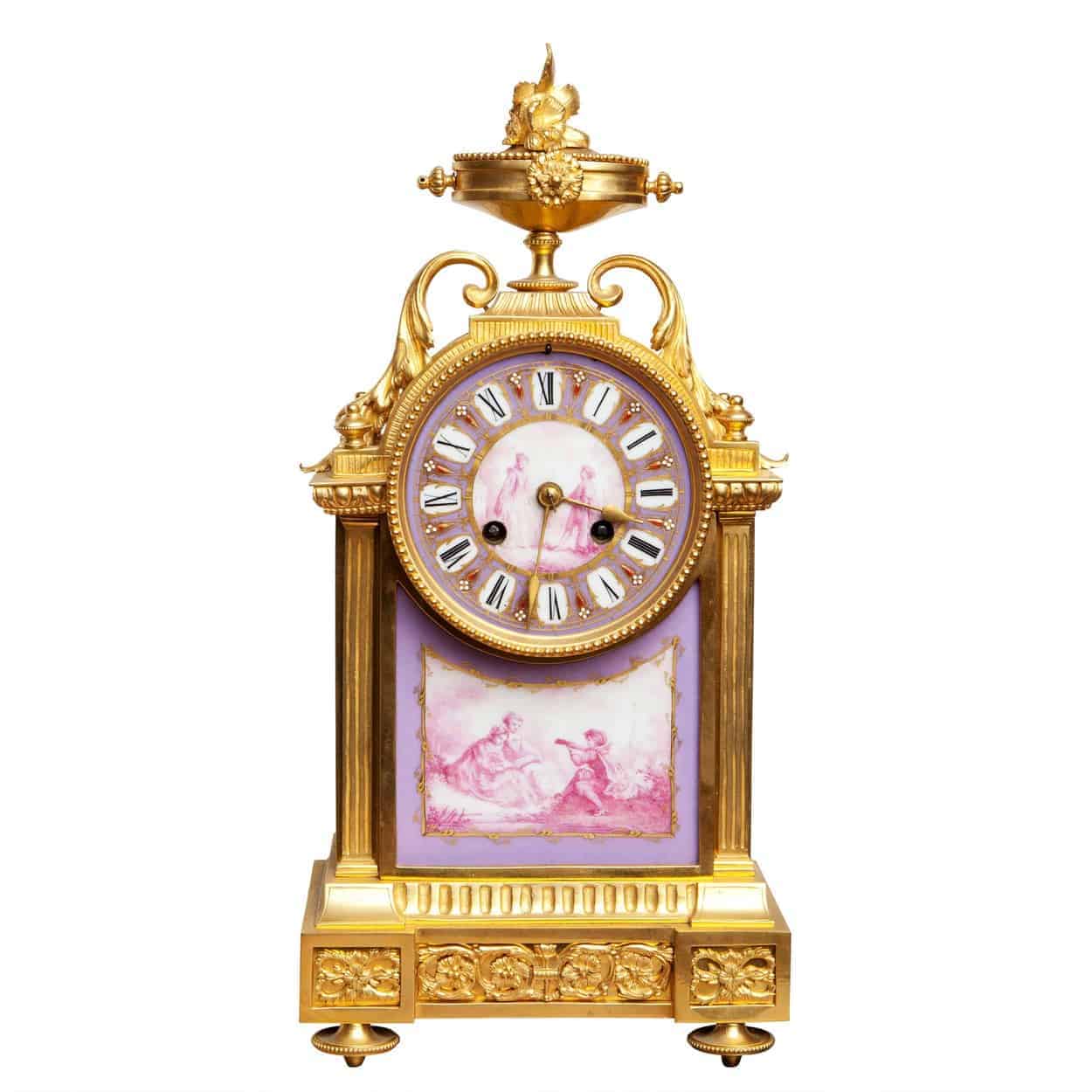
There are also elegant 18th-century clocks made out of porcelain and ormolu. These timepieces have opulent and elegant designs.
What Are The Most Valuable Antique Clocks?
The most valuable antique clocks are the most ancient ones that have been carefully preserved. It has to be a high-quality antique clock to become valuable. Also, some of the most expensive ones are more than two or three centuries old.
Most clock collectors look for timepieces from the 17th and 18th centuries. The following clocks are considered some of the most expensive ones worldwide:
- Thomas Tompion Clock – According to Bonhams Press, its price can exceed £2,000,000.
- Chinese Ormolu Clock – $4,000,000
- Duc d’Orleans Breguet Symapthique Clock – $6,800,000
How To Value Antique Clocks?
You can use multiple factors to determine an antique clock’s value.
- Condition – As we mentioned earlier, when it comes to antique clocks, you should know that the older, the better. However, they must be in good condition. Missing elements, scratches, and malfunctioning can lower the price of an antique clock.
- Provenance – This is a rare condition, but it can significantly raise the price of an antique clock. For example, the Breguet Symapthique Clock once belonged to the Duc d’Orleans, so its price became excessively expensive.
- Clockmaker trademark – This is a crucial factor you should aim to look for in an antique clock. A well-preserved vintage clock will have its craftsman’s trademark.
- Restoration – Some of them need clock repairs, and that’s where restoration is useful. However, this process also decreases the price of the clock.
Where To Find Antique Clocks
You may be trying to find a real lantern clock, the first type of clock used massively in ancient houses. However, you’re probably not going to find it in the supermarket. You might find a replicated version of it but not the authentic clock. There are other places where you can find original vintage clocks, such as:
- Clock auctions – This is a great place to find original pieces because there are usually third-party verifiers that validate a timepiece’s authenticity. You will have one to two days before the auction to check the clocks.
- Antique shops – This is another way to find antique clocks, but you must go to a reputable store to ensure authenticity. Some of them have free shipping, but it’s more reasonable to go in person for a better experience. This is an opportunity also to see additional inventory that might interest you.
- Flea markets – There is less security in flea markets that you’ll find an original time clock. However, if you have the right knowledge to determine an authentic piece, you can find a masterpiece for a very low price.
- Clock Fairs – This is an event where numerous clock collectors, antique dealers, and traders reunite for selling, browsing, or buying antique clocks.
Wrapping up
Antique clocks are rare timepieces with a lot of value depending on their condition, manufacturer, and date. If you’re a clock lover and would like to add value to your collection, aim for those that are in good condition, are ancient, and have a peculiar aspect that makes them special. Will you dare to buy an antique clock? What’s your favorite style? Tell us in the comments below.
